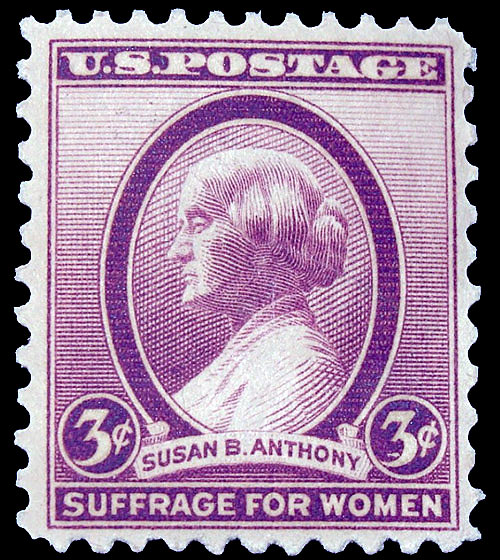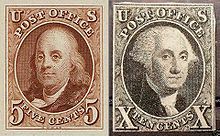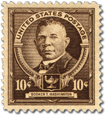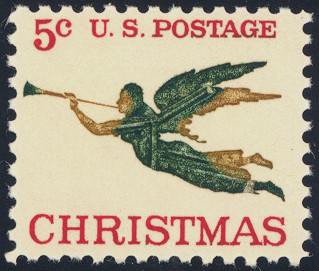The Story of American Postage Stamps
The use of postage stamps in what is now the United States dates to early colonization by Great Britain. The American colonists inherited from their British ancestors a tradition of post-marking mail, both letters and larger packages. In the wake of the American Revolution, the American colonists formed their own postal service, which began service in 1776. In making the announcement, the Continental Congress also named Benjamin Franklin the first Postmaster General. The Constitution created an Office of the Postmaster General. Samuel Osgood was the first to hold that office after the ratification of the Constitution. His staff at the time was small, mainly because the number of post offices in the relatively small country was relatively small, 75. As the country grew, however, Congress was compelled to build more post roads and post offices and appoint more postal staff. And as more and more people sent mail, the practice of going to the post office to retrieve all mail expanded to include home delivery. President Andrew Jackson elevated the Office of the Postmaster General to Cabinet level, making William T. Barry the Postmaster General to serve in the Cabinet. Subsequent Postmasters General oversaw the expansion of the Postal Service to match the expansion of the country. Mail was first delivered by hand, then by men riding horses. (The most famous horseback-mail-delivery system was the Pony Express.) As the country expanded its borders westward, stagecoaches began carrying mail, trodding the same trails westward (Oregon Trail, Mormon Trail, Santa Fe Trail) as the settlers of the newly acquired territory. One of the most famous mail delivery companies of the 19th Century was the Overland Mail Company. The advent of the railroad and the driving of the Golden Spike meant that mail could be carried even faster to places east and west, north and south. Another innovation, however, put a dent in the number of mail items carried: the telegraph. The same was true for the telephone, the FAX machine, and the Internet, all alternatives to traditionally handwritten and hand-delivered communication.
The first stamped envelopes came along in 1853 and proved popular mainly because they already had postage attached. The stamps themselves were considered mainly functional for many years. In 1893, however, to commemorate the World Columbian Exposition in Chicago, the U.S. Government issued commemorative stamps. Because the scenes the stamps were intended to illustrate, Columbus's voyages to the New World, were so large, the Government enlarged the stamps themselves to accommodate the images. The result was stamps nearly twice the size of "normal" stamps.
In the more than 150 years since, postage stamps have featured most if not all famous events in American history. This includes visits by explorers like Christopher Columbus and Leif Erikson, encampments like the Jamestown Settlement and the Plimoth Plantation, the expansion of the country through things like the Louisiana Purchase and the Mexican Cession and the Pony Express and the driving of the Golden Spike, and the founding of the branches of the armed forces and of the oldest universities in the country.
Animals, among them common house pets and endangered species and extinct beasts, have featured prominently on stamps. So have plants, living above ground or under the sea. War heroes on stamps include Washington, Ulysses S. Grant, William T. Sherman, Andrew Jackson, Robert E. Lee, Thomas "Stonewall" Jackson, Philip Sheridan, David Farragut, Audie Murphy, Omar Bradley, Alvin York, Douglas MacArthur, George Patton, and Dwight D. Eisenhower.  Leaders of movements have appeared on stamps. Examples include Susan B. Anthony, Clara Barton, Samuel Gompers, Martin Luther King, Jr., Thurgood Marshall, Rosa Parks, and Harriet Tubman. Leaders of movements have appeared on stamps. Examples include Susan B. Anthony, Clara Barton, Samuel Gompers, Martin Luther King, Jr., Thurgood Marshall, Rosa Parks, and Harriet Tubman.
Famous authors to appear on stamps include Louisa May Alcott, Samuel Clemens (Mark Twain), James Fenimore Cooper, Ralph Waldo Emerson, Washington Irving, and Edgar Allan Poe. Stamps featuring American inventors include those showing Alexander Graham Bell, George Eastman, Thomas Edison, Elias Howe, Cyrus McCormick, Samuel Morse, and Eli Whitney. The number of stamps featuring writers, actors, poets, painters, singers, and composers is very long indeed. Among them have been Humphrey Bogart, Walt Disney, George Gershwin, Audrey Hepburn, and Will Rogers.
A common theme for stamps has been the American Flag, although it didn't appear initially until 1926. A stamp of that year showed the "Betsy Ross" flag with 13 stars ina circle. In 1931, the 48-star flag appeared. It wasn't until 1957 that the flag was the sole focus of a stamp. That stamp, featuring the 48-star flag, was released on July 4. Fictional characters have a long history of appearing on stamps. Bugs Bunny made a splash in 1997. A famous folk heroes issue of 1996 featured Paul Bunyan, John Henry, Pecos Bill, and Casey at the Bat. A 1984 issue featured Smokey the Bear.
Something similar occurred three years later, and the result was a stamp that bore the letter "A." The price that year was 15 cents. The Postal Service followed the practice occasionally for the next 20 years, ending with "H" stamps in 1998. The latest nondenominated stamp is the "Forever" stamp, first issued in 2007. For most of the time that the U.S. Government has issued postage stamps, the stamps have contained glue on the reverse, requiring people to wet the glue in order to get the stamps to stick to the envelopes or packages being mailed. The Postal Service found increasing instances of people attempting to (and sometimes succeeding at) reuse stamps by soaking the envelopes, thereby rendering the back-of-stamp glue un-adhesive. Partly for this reason and partly for consumer convenience, the Postal Service introduced self-adhesive stamps, first in 1974 and then more widely in 1992. |
|
Social Studies for Kids
copyright 2002–2025
David White



 The first postage stamps came out on July 1, 1847. They were the 5-cent Benjamin Franklin and the 10-cent
The first postage stamps came out on July 1, 1847. They were the 5-cent Benjamin Franklin and the 10-cent  The Government in 1902 issued the first stamp to feature a woman, an 8-cent stamp showing Martha Washington. Five years later came the first stamp to feature a Native American, a 5-cent stamp honoring Pocahontas. Booker T. Washington was the first African-American to features on a stamp, a 10-cent variety that first appeared in 1940.
The Government in 1902 issued the first stamp to feature a woman, an 8-cent stamp showing Martha Washington. Five years later came the first stamp to feature a Native American, a 5-cent stamp honoring Pocahontas. Booker T. Washington was the first African-American to features on a stamp, a 10-cent variety that first appeared in 1940. Every American president no longer living has been on a stamp. Washington, Franklin, and
Every American president no longer living has been on a stamp. Washington, Franklin, and  The best-selling stamp ever is the "young" Elvis Presley, one of a two-part 1993 issue of 29-cent stamps. The Postal Service issued two stamps of the famed singer, one showing him early in his life and the other showing him later in life. After a well-publicized vote, the Postal Service announced that it would stop printing the "older" Elvis.
The best-selling stamp ever is the "young" Elvis Presley, one of a two-part 1993 issue of 29-cent stamps. The Postal Service issued two stamps of the famed singer, one showing him early in his life and the other showing him later in life. After a well-publicized vote, the Postal Service announced that it would stop printing the "older" Elvis. Several holidays have featured on stamps, most prominently Christmas. In most of the past several decades, the Postal Service has released a selection of Christmas stamps, featuring concepts and icons familiar to followers of both the religious holiday and the secular one.The price of stamps has increased through the years. Until 1975, all stamps prominently featured the price on the front. That year, however, the Postal Service issued two Christmas stamps that did not have a printed value. The current first-class rate was 10 cents, but the Postal Service had requested a rate increase to 13 cents. Because the stamps were issued even though the rate increase wasn't final, the Postal Service didn't include the price on the front.
Several holidays have featured on stamps, most prominently Christmas. In most of the past several decades, the Postal Service has released a selection of Christmas stamps, featuring concepts and icons familiar to followers of both the religious holiday and the secular one.The price of stamps has increased through the years. Until 1975, all stamps prominently featured the price on the front. That year, however, the Postal Service issued two Christmas stamps that did not have a printed value. The current first-class rate was 10 cents, but the Postal Service had requested a rate increase to 13 cents. Because the stamps were issued even though the rate increase wasn't final, the Postal Service didn't include the price on the front. 
